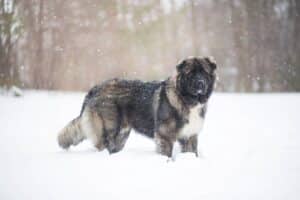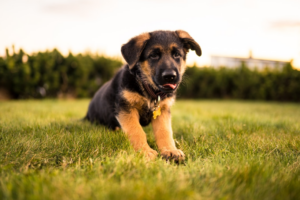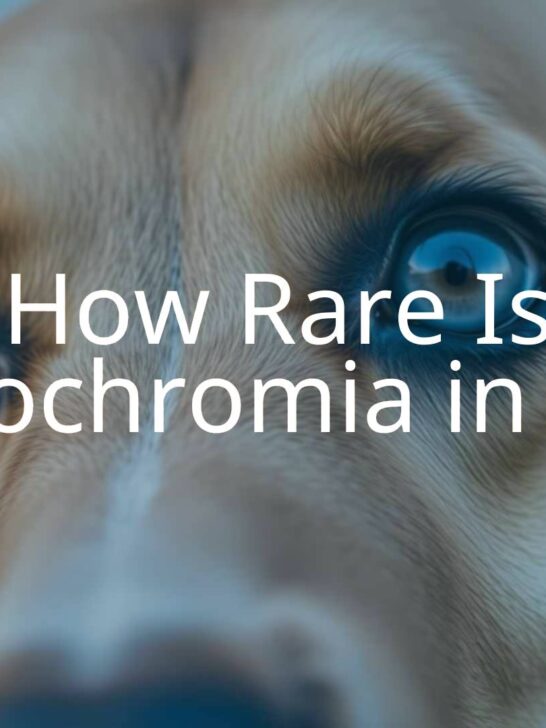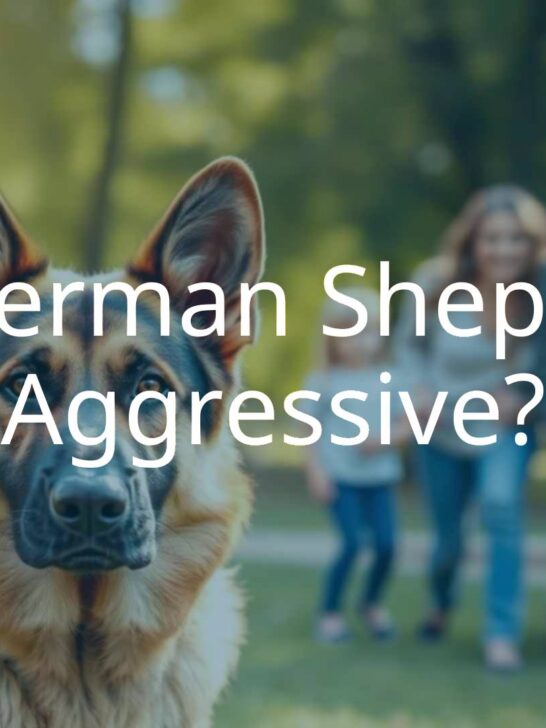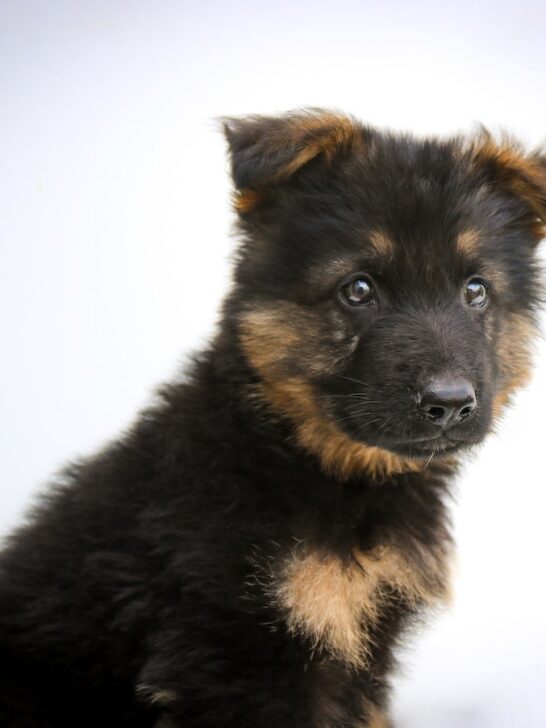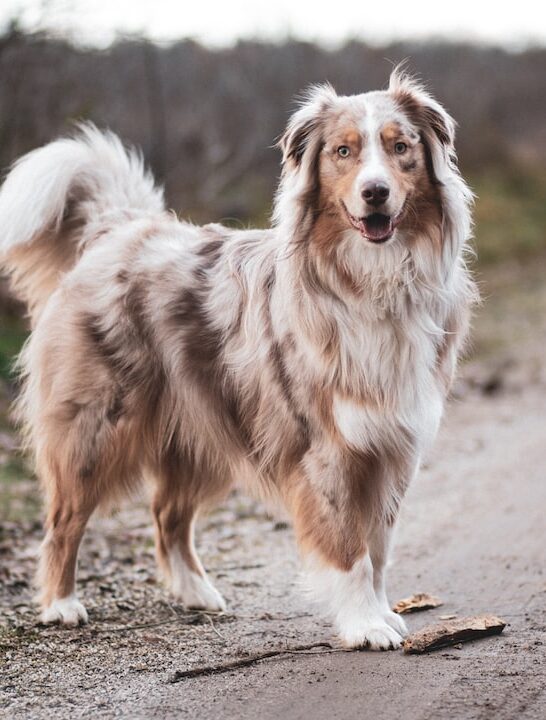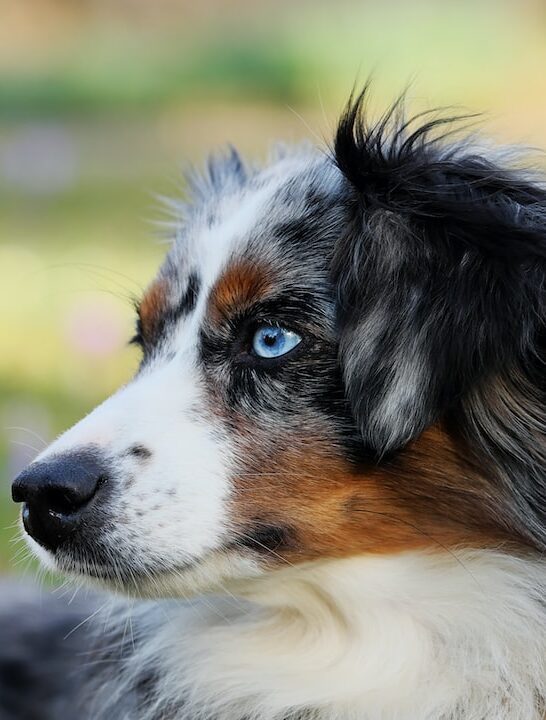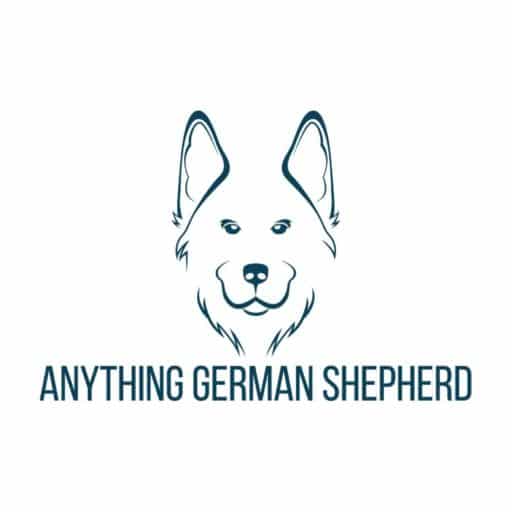German Shepherd Wolf Mix Breed: Why Owning This Hybrid Dog Might Be a Bad Idea
Owning a German Shepherd Wolf Mix might be a less-than-ideal choice. Why?
German shepherd and wolf mixes walk a tightrope between wild animals and domestic pets because of the wolf parent or grandparent.
The resulting hybrid may be deemed unreliable or less domesticated according to the law. This also means that it’s dangerous and prone to act violently.
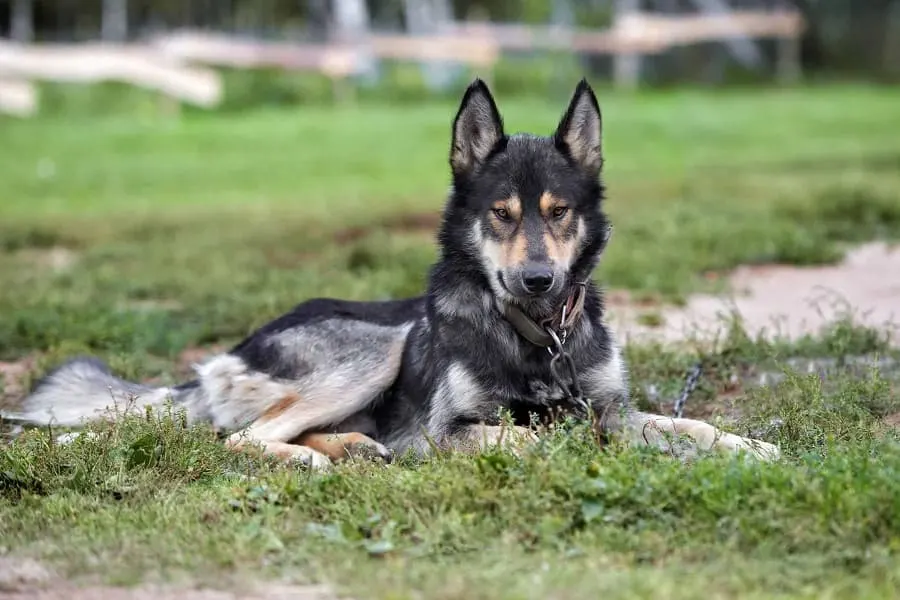
This breed, sometimes known as a wolf shepherd, is meant for professional dog trainers. GSD-wolf mixes need lots of positive reinforcement training, mental stimulation, exercise, and socialization from an early age.
This breed is a beautiful mix of both the German shepherd and wolf. It has many physical attributes similar to both:
● The German’s shoulder height
● Its lean body structure
● Triangular ears
● Almond-shaped eyes
What Is A German Shepherd Wolf Mix? Breed Combinations
The first German Shepherd wolf mix was created in 1932 by Leendert Saarloos, and certain studies actually show that they existed in Teotihuacan a long time ago.
Not all German shepherd and wolf dog hybrids for sale are half-German shepherd and half wolf. Some may be three-quarter GSD and one-quarter wolf.
This would mean that one parent is a full German Shepherd and the other parent is half wolf and half GSD.
Some mixes are sold where the wolf is a great-grandparent or even a great-great-grandparent. The more dog DNA in the mix or from the parent breeds, the better if you want a companion animal that can be taught basic obedience.

Unfortunately, they may all be considered wolves under the law and there is no official registry for wolf mixes. This means that organizations like the AKC don’t recognize them. As a result, it’s difficult to prove if your German Shepherd Wolf mix actually has any wolf ancestry.
Another problem is the disagreement among experts and breeders about what defines a wolf mix. Some say it should have a purebred wolf in its family tree within four or five generations, while others have their own standards.
Overall, it’s hard to know for sure if your German Shepherd Wolf mix is truly part wolf. It’s important to consider this uncertainty before deciding to get one of these dogs.
Quick Facts
| Details | |
|---|---|
| Height | 24 inches tall on average |
| Weight | 60 lbs on average |
| Appearance | Not huge dogs but have an imposing presence. medium-large breeds. |
| Coat | Prone to shedding. Colors include black & tan, grey & white, silver & white, brown & grey, tan & grey. |
| Health | Lifespan: 14 years on average. Genetic diversity will improve the overall health of the mix, but they’ll still be prone to certain hereditary conditions like hip & elbow dysplasia. |
| Family Friendly? | No – definitely not recommended for families with young kids. |
| Temperament | Unpredictable temperaments. Although GSDs are easily trainable, wolves are wild animals. These hybrids should be reserved for very experienced dog owners. |
| Training & Exercise | They need a ton of exercise, which is easier said than done. Once they reach a certain age and level of strength, walking your wolfdog in public can be difficult. Training & socializing these dogs from puppyhood will be vital. |
German Shepherd Dog Wolf Mixes Are Usually Illegal to Own
Wolves are wild animals. In most places in the United States, it is illegal to own a wild animal like a wolf unless you have a special (and expensive) wildlife permit.
A GSD wolf mix is a cross between a wild animal and a domestic pet.
Because of the wolf parent or grandparent, the law does not consider the resulting mix a domesticated dog as it is prone to acting dangerously.
Therefore, if you want a wolf-dog mix, you may have to do a lot of research to even find a place in the world that will let you do so.
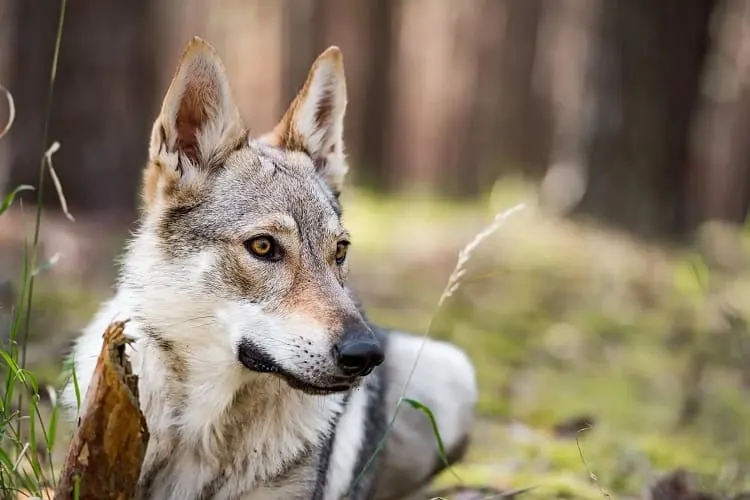
Do Some Dog Breeds Have More Wolf DNA Than Others?
Some proponents of wolf-dog mixes claim that some dog breeds have more grey wolf parent DNA than other dog breeds.
If these breeds are allowed, then so should GSD and wolf mixes. According to Science Trends.com, a few breeds do have more wolf DNA than others.
These breeds include the Finnish Spitz, the Shar-Pei, the Siberian Husky (another breed often crossed with wolves), and the Greenland dog.
However, the ancestors of these breeds branched off from wolves thousands of years ago, and not simply one or two generations ago.
German Shepherds: Are They Part Wolf?
Over one hundred years ago, German shepherds were popularly called Alsatian Wolf Dogs, since they were bred in the Alsace region of what is now France and looked like wolves.
However, no wolves were actually involved in creating German Shepherd mixes.
Other breeds mistakenly thought to have wolves in their recent ancestry include Siberian Huskies and the Alaskan Malamute. Although descended from wolves, the last wolf in their pedigree was thousands of years ago.
German Shepherd Wolf Mixes Are Unpredictable
According to the International Wolf Center, it’s impossible to predict the behavior, trainability, and health problems in a dog-wolf mix. Even puppies in the same litter can act in vastly different ways.
Wolves rely on their instincts – It’s not instinctive for them to look for humans as pack-mates or pack leaders as dogs do.
Wolves tend to ignore people and do what they want. Any wolf-dog mix will be prone to unpredictable behavior at times and will tend to act more like a wolf than a dog.
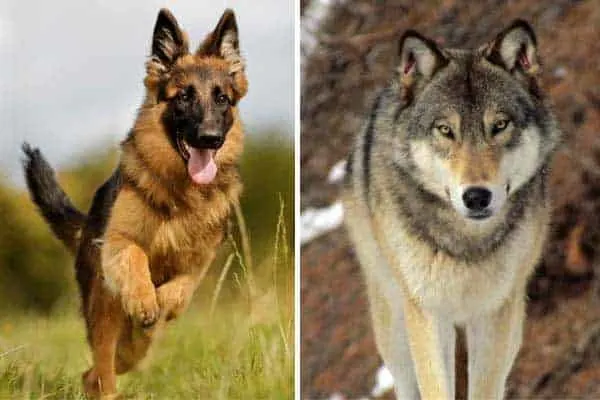
Are German Shepherd Wolf Mixes Better Guard Dogs?
Wolves are intensely territorial creatures. They attack any predator in their home range, including wolves not in their packs.
This behavior has convinced some people that GSD-wolf mixes make better guard dogs than dogs.
This, however, is a myth. According to the International Wolf Center, dogs have been bred for thousands of years to bark when intruders appear.
Wolves on the other hand stay silent. They’re also shy by nature and are prone to flee from intruders who look bigger than they are.
Will GSD Wolf Mixes Live Longer than A GSD?
German shepherds live notoriously short lives since they’re large dogs – their average life span is from nine to thirteen years.
This is because large dogs age faster than small dogs.
Why this happens in dogs and not other species is not known.
A GSD wolf mix won’t necessarily live any longer than a dog, especially if they inherit some of the devastating health problems common in the breed.
Are GSD Wolf Mixes Healthier than Purebred GSDs?
The future health of a wolf mix is harder to predict than the health of a purebred German Shepherd. After decades of study, it is now known what health problems certain breeds are prone to.
It’s more complex with wolves since they tend to die from problems other than old age or disease in the wild.
Because German Shepherd wolf dogs are a genetic toss of the dice, you have no way of knowing what health problems these animals will be prone to.
A wolf mix needs to be well-behaved in order to be treated for an illness, but the mix may even be too dangerous to treat.
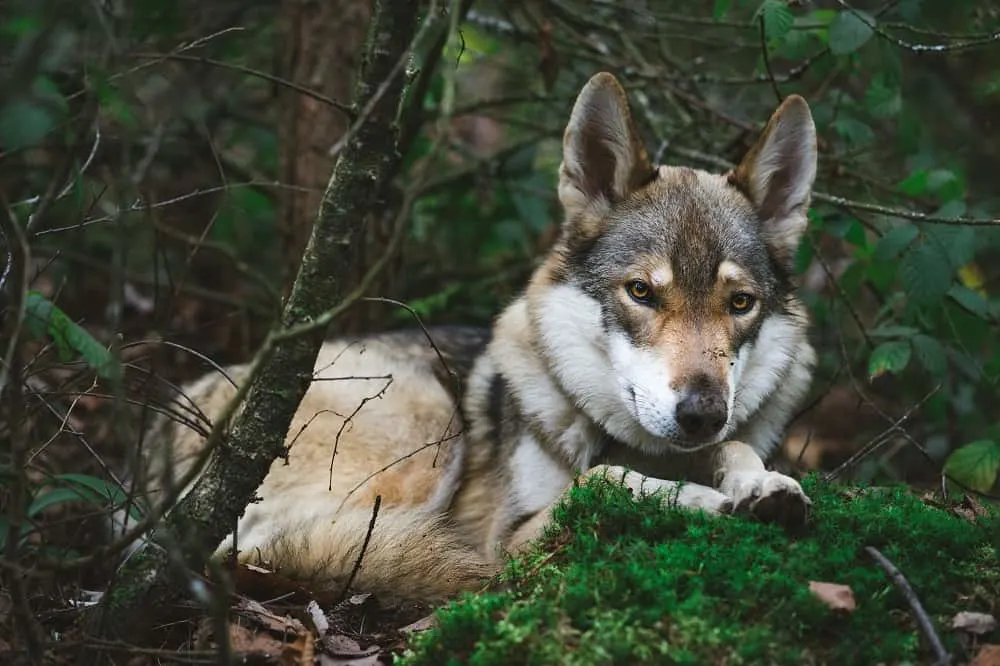
Finding a Veterinarian For a GSD Wolf Mix
Assume that any animal you adopt or buy will eventually get sick. Never assume that all vets will be willing to take in a German shepherd wolf mix as a patient.
All the vets in your area may refuse to work on such an animal, and this is not due to prejudice against wolves.
This is because wolves and wolf-mixes are different species than dogs and are considered “exotic”. Although all vets are trained to help domestic animals like dogs, very few are trained in the care of exotics.
Can A GSD Wolf Mix Get The Same Vaccines As A Dog?
One problematic area for vets and exotic animal owners is that of vaccination. Rabies vaccines are crucial for dog owners.
However, many regular dog vaccines don’t work on wolves and may not work on German Shepherd wolf dog mixes.
Because of the threat of rabies and the problems of the rabies vaccine working on wolf dogs, any wolf dog that shows signs of rabies or has been exposed to a rabid animal needs to be euthanized.
According to the California Veterinary Medical Association, this is the policy in California.
What Are The Most Common Medical Problems With GSD-Wolf Mixes?
The two most common medical problems with any wolf-dog mix are complications from being overweight and hip dysplasia.
Being overweight can also contribute to hip and elbow dysplasia. Hip dysplasia is very common in German shepherds and most large dog breeds.
Hip dysplasia symptoms like limping start when the dog is young and get worse over time if left untreated. This is a very painful and chronic condition that may require surgery to treat.
What Other Medical Problems Could A GSD Wolf Mix Have?
Depending on the genetic roll of the dice, a German Shepherd wolf mix puppy may be looking at a very short, unhealthy life. According to the Mid-Atlantic German Shepherd Rescue, GSDs are prone to bloat, epilepsy, perianal fistulas, skin allergies, lupus, and blindness.
GSDs are also prone to a deadly and incurable condition called degenerative myelopathy that hits GSDs seven years of age and older.
They’re also at risk of developing Pancreatic Enzyme Insufficiency, a pancreas problem that makes them unable to extract nutrition from dog food.
Effective Ways to Exercise a German Shepherd Wolf Mix
Since obesity is an issue for wolf-dog hybrids, getting sufficient exercise and socializing your German Shepherd wolf mix is especially important to their health.
However, this can become quite complicated since German Shepherd wolf hybrids cannot be walked and played with like normal dogs.
Puppies may be able to walk on a leash in the beginning. But there will come a day when they’re strong enough to ignore you and pull you across the street to go chasing a squirrel.
Sadly, a lot of wolf-dog hybrids wind up staying permanently in an outdoor pen because they cannot be walked or trained.
How Large Can A GSD Wolf Hybrid Get?
Despite the endless unknowns surrounding a GSD wolf mix, their size is actually predictable.
The smallest hybrids will be as small as a GSD – roughly 49 pounds.
The largest will be about 180 pounds, which is the size of a large male Mackenzie Valley wolf, the largest known wolf species.
As is common in most wolf species and dog breeds, females tend to be smaller. Neutering doesn’t seem to impact how large a GSD or a German Shepherd wolf mix would become.
GSDs are as tall as small wolves, but wolves can actually reach heights of 34 inches tall at the shoulders.

What are the Color Variations of GSD Wolf Mixes?
GSD wolf mixes come in a wide variety of colors, but most have two or even three tones to their coats.
Rarely are solo coats produced, but when this does occur they’re often all black, all dark brown (called liver), all red (called sable), or all white.
Canines in two or more colors blend into the background better and so are more common, even if the German Shepherd wolf mix dogs never has to hunt for his supper.
Common two-toned colors include black and tan, grey and white, silver and white, brown and grey, and tan and grey.
What If The Wolf Mix Puppy Was Trained Really Well, Will The Adult Behave?
Pups of dogs, wolf-dog mixes, and even wolves can be trained and easily handled.
However, once the wolf-dog hybrid becomes physically and sexually mature, all bets are off. They’ll do whatever they want, which isn’t necessarily what you want.
Just when a GSD wolf mix matures differs from puppy to puppy. Dogs mature a lot faster than wolves.
A German shepherd wolf mix could mature as early as six months when a GSD matures, or as late as four years old when a wolf typically matures.
What About All Those Wolves in Movies & TV?
We’ve all seen movies and television shows where wolves do a wide variety of stunts or accompanying the police and military. However, these are not wolves.
They’re simply dogs with dyed coats and sometimes, added fake fur. Wolves aren’t reliable enough to be used in movies or on television.
According to Psychology Today, wolves aren’t completely untrainable. They can undergo training and socialization. However, wolves will only obey when they want to and not whenever they’re cued to perform.
The more GSD in a GSD wolf mix typically means a more trainable dog.
However, if you want an animal that obeys commands all the time, why not just save yourself the time and money, and go with a dog?
Why Wolves & Wolf-Dog Mixes Cannot Be Well-Trained
Dogs have been bred for thousands of years to do what people want them to do.
It’s in their genes to not only please people but to watch them constantly to see if the person is going to ask them to do something. They also ask people for affection.
A wild wolf is just the opposite and many wolf-dog mixes also suffer from this character flaw, especially if they’re half-wolf.
They often just want to be left alone and don’t solicit affection from people. They are very shy and skittish. And since they have no drive to please people, they won’t.
If It Doesn’t Work Out, Can’t I Just Set My German Shepherd Wolf Mix Free?
Setting your GSD wolf mix free is a bad idea and incredibly cruel since the animal won’t know how to survive on their own in the wild. Hunting isn’t an instinctive ability in wolves, dogs, or wolf-dog mixes.
They have to be taught to hunt by their older pack-mates. GSD wolf mixes lack a pack since they’re usually brought up by a dog mother and so never learn to hunt.
They grow accustomed to being given food at predictable times.
If you’re curious to know about the German Shepherd wolf mix, check out our video.
Has A GSD Wolf Hybrid Ever Attacked Anybody?
Many German Shepherd wolf mixes and wolf hybrids have severely bitten or attacked people and pets in the United States.
Wolf hybrids often attack children more than adults because children make noises resembling small prey animals.
More often, wolf-dog mixes will attack other pets than people. These are very territorial animals.
If any other animal is perceived as being on their turf, a GSD wolf mix may not only attack but also kill a dog, cat, or other animal.
What Happens If Your GSD Wolf Mix Bites or Attacks Anyone?
If your German shepherd wolf mix does happen to attack anyone on or off of your property or does manage to kill someone’s beloved pet or valuable livestock, then you’re in serious trouble.
As the owner of a German Shepherd wolf mix, you’re legally responsible for the actions of your wolf dog, even if they haven’t left your property.
Not only will you have to pay restitution and possible court costs, but depending on your local laws, your GSD wolf mix may be confiscated and euthanized.
Your chances of appeal are very small and will involve significant legal expenses.
Final Thoughts
When it comes to owning a GSD wolf hybrid or mix, the negatives outweigh the positives.
Since you’re not dealing with a purebred dog or purebred wolf, appearance, health problems, and wolf-like behavior will be impossible to predict.
The only known factors are that this is a large animal with the ability to inflict serious damage on pets, livestock, wildlife, and people, especially children.
Wolf German Shepherds aren’t trainable animals because they have little to no desire to please people.
You may have to keep your German Shepherd wolf hybrid in a pen for the rest of its life. You may never be able to find a vet willing to look after the GSD wolf mix.
You may have laws banning the ownership of such an animal where you live.
Then there’s the potential legal issues if the GSD wolf mix attacks anyone visiting your home, or if the animal gets out and attacks someone.
A GSD wolf mix puppy or adult costs thousands of dollars. You will need plenty of land, fencing, and legal advice in order to keep it.
It’s just not worth the hassle to you, your neighbors, and the community at large. When it comes to any wolf-dog mix, leave it alone. Get one of the safer German Shepherd mixes that are easy to train instead.


